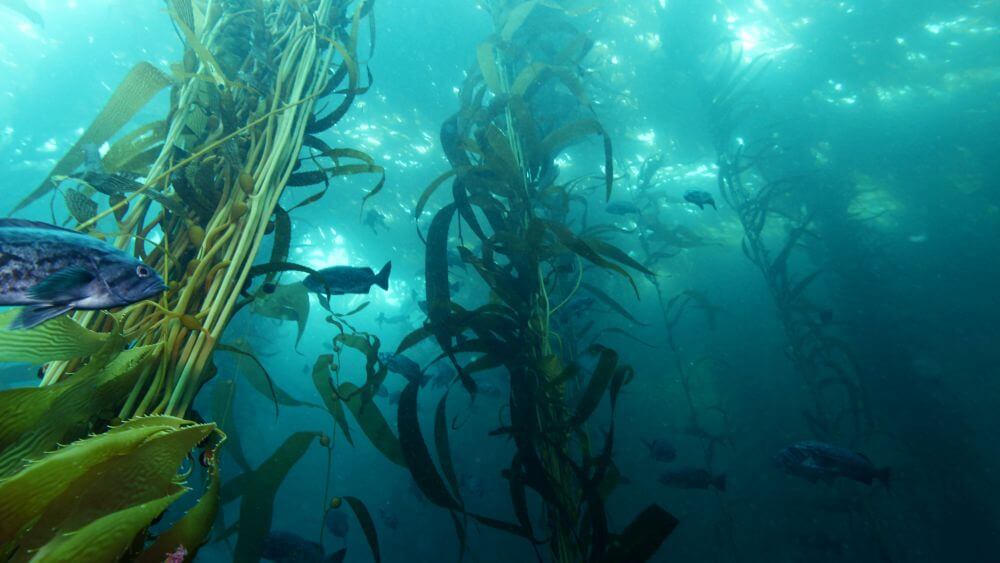Blue Carbon in Marine Protected Areas

Blue Carbon in Marine Protected Areas: Part 1
A Guide to Understanding and Increasing Protection of Blue Carbon (ONMS-21-10)
Blue Carbon in Marine Protected Areas-Part 2
A Blue Carbon Assessment of Greater Farallones National Marine Sanctuary (ONMS-21-10)
Blue Carbon in Marine Protected Areas-Part 3
An Evaluation of Sedimentary Carbon Stocks in Greater Farallones and Cordell Bank National Marine Sanctuaries (ONMS-23-09)
Coastal and marine ecosystems play a significant role in the global carbon cycle, sequestering and storing carbon over long timescales. These "blue carbon" ecosystems help address the causes and impacts of changing ocean conditions by facilitating the uptake of atmospheric carbon dioxide (CO2) into the ocean and transporting carbon into sediments or deep waters, where it can remain indefinitely if undisturbed. Inclusion of these coastal and ocean processes as part of the solution to global environmental change is essential to achieving global goals around CO2 management; however, blue carbon is often overlooked in policies. Further, resource managers of the largest network of U.S. marine protected areas (MPAs), the Office of National Marine Sanctuaries (ONMS), have not incorporated assessments of blue carbon extent and functionality into their management plans, policies, or decisions, which can result in unintentional carbon emissions and lost opportunities to further protect and enhance carbon sequestration in MPAs.
Though blue carbon is a rapidly growing area of research, guidance for how to apply blue carbon information in MPA management is lacking, and for some sequestration processes, completely absent. Led by Greater Farallones National Marine Sanctuary, with support from the Greater Farallones Association, this series informs and guides MPA managers in the assessment, protection, and management of blue carbon habitats and processes.
Blue Carbon in Marine Protected Areas: Part 1: serves as an informational, guiding document to aid ONMS and MPA managers worldwide in considering and including blue carbon processes within management decision-making. This includes a review of blue carbon potential in MPAs, the role MPAs play in protecting and restoring blue carbon, potential future funding mechanisms to support blue carbon management, guiding principles for advancing blue carbon inclusion in MPA management, and a path forward for national marine sanctuaries. Guiding principles include:
- Ecosystem-based management is blue carbon management.
- With small initial investments, MPA managers can vastly increase their knowledge of blue carbon at their site.
- Blue carbon should be incorporated into marine spatial planning and considered in MPA designation and management.
- Managers should understand how to leverage blue carbon to finance MPAs.
- Certain management actions produce greater sequestration gains.
- Blue carbon management is not just coastal.
- Policies to address changing ocean conditions must include blue carbon.
Blue Carbon in Marine Protected Areas: Part 2 is a case study assessment of select blue carbon habitats (eelgrass and saltmarsh-associated sediments) and processes (kelp export and whale falls) for Greater Farallones National Marine Sanctuary, and serves as a model for other sites in the National Marine Sanctuary System. The habitats and processes assessed in the report together accumulate 4,950 megagrams of carbon each year.
Blue Carbon in Marine Protected Areas: Part 3 demonstrates the carbon storage value of offshore marine protected areas and identifies seafloor carbon “hotspots” based on a novel relationship between sediment grain size and organic carbon content. This report provides an estimate of carbon storage in the sanctuaries’ surficial sediments, and discusses various sources of disturbance to the seabed and the importance of seabed protection.
This report series serves as a preliminary step in ensuring that national marine sanctuaries protect and enhance the critical services of its coastal and ocean resources.
Key Words
carbon, carbon storage, carbon sequestration, carbon export, marine protected area, seagrass, salt marsh, mangrove, phytoplankton, kelp, fish, whale, seafloor, substrate

